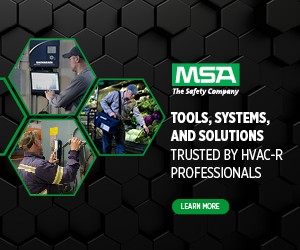Regulatory Reforms Advance in Canada and U.S.

Recent developments in Ontario, Canada and the U.S. highlight examples of how IIAR is working to address regulations impacting the industry.
TSSA IMPLEMENTING REGULATORY REFORMS IN ONTARIO, CANADA
IIAR has been working closely with the Global Cold Chain Alliance over the last few years to reform an outdated regulation impacting facilities in Ontario, Canada. In 2015, industry representatives initiated meetings with the Technical Standards and Safety Authority (TSSA) to discuss Ontario regulations related to attendance requirements for operating engineers. Under long-standing Ontario policy, facilities have been required to provide operating engineers on a continuous (24/7) basis based solely on the horsepower present at the facility. Industry explained to TSSA that the prescriptive nature of this policy has not kept up with advancements in technology and increasingly safer systems and procedures. TSSA acknowledged that the policy was very prescriptive and that a review of the regulation was warranted.
As a result of the industry bringing these issues forward, TSSA commissioned a study to examine the Ontario policy, along with the approaches from other jurisdictions in Canada and North America. At the completion of the study, it was determined that further action should be taken. A task force was formed with representatives from the various industries and sectors impacted by the policy. This group met on numerous occasions and ultimately arrived at a consensus that an alternative approach was needed for the operating engineers regulation. The task force named this alternative “Path 2”, which would provide a framework by which facilities could develop their own performance-based risk and safety management plans based on the specific needs of their individual facilities. A technical committee was then formed to take a deeper look at how a Path 2 process could work. IIAR Board member Dave Malinauskas participated was a member of the technical committee and played an important role in the committee’s work. At the end of the process, the TSSA and the Ontario Ministry of Government and Consumer Services concurred that the old operating engineers policy was too prescriptive, not risk-based and exacerbates the shortage of qualified operating engineers.
These concepts were then taken up by the Ontario Parliament through Bill 66, Restoring Ontario’s Competitiveness Act, 2019. This legislation is broader than just the operating engineers policy and was designed to improve the climate for businesses in the province. Bill 66 was approved by the Ontario Parliament and received Royal Assent during the summer of 2019. TSSA is now in the process of implementing the operating engineers components of the legislation. Since passage, industry has held multiple meetings with TSSA to discuss implementation.
TSSA has stated that the goals of the new regulation are to:
- Enhance safety
- Reduce regulatory burden
- Drive innovation
- Improve compliance
- Address labor shortage
The new policy is broken down into two paths. Path 1 is a modified version of the current policy that prescribes attendance requirements based on horsepower and some additional factors. Facilities will receive a score that determines what class of facility they will be assigned and the corresponding attendance requirement.
Path 2 provides a more flexible approach that is based on site-specific risks and how a facility plans to mitigate such risks through the development of a Risk and Safety Management Plan. Plans would be developed by facilities and submitted to TSSA for approval. If the plan is approved, the facility will be registered and receive periodic audits to ensure that the facility is following the plan that was submitted.
TSSA is intending to base the Risk and Safety Management Plans on the Chemical Industry Association of Canada’s Process Safety Management Standard (CSA Z767-17). This approach is similar to Process Safety Management in the United States. Companies with facilities in Ontario considering the Path 2 approach are encouraged to review CSA Z767-17. The IIAR PSM/RMP Manual can be a useful resource to assist facilities in developing Risk and Safety Management Plans and complying with the new program. TSSA will also be developing guidelines to assist facilities in their evaluation of the Path 2 approach.
TSSA has indicated that they intend to have draft guidelines for Path 2 completed by the end of 2019 and offer a consultation period for industry in early 2020. The feedback received from stakeholder consultation will be incorporated into the draft guidelines and a final draft is expected to be available by spring 2020. IIAR and GCCA will continue to actively engage with TSSA as the implementation process moves forward.
RMP RECONSIDERATION RULE NEARS COMPLETION
While Ontario moves forward with changing regulations related to operating engineers, the U.S. EPA is inching closer to completion of changes to the Risk Management Program regulation. One of the last regulations finalized at the end of the Obama Administration was a rule that amended the RMP program and added requirements to regulated facilities. Shortly after taking office, the Trump Administration issued a series of delays to the effective date of the RMP amendments and began the process of rulemaking to reconsider the changes made by the Obama Administration. The so-called “Reconsideration Rule” would rescind problematic provisions included in the amendments rule, included the removal of provisions related to third party audits, root cause analysis, information sharing and safer technology analysis.
The Proposed Rule was published in May 2018. IIAR gave oral comments supporting the reconsideration rule at an EPA public meeting and, along with a coalition of industry partners, submitted written comments supporting the rulemaking. EPA has since been working to evaluate public comments and finalize the rule. In September 2019, EPA submitted the Final Rule for review by the White House Office of Management and Budget (OMB). This is one of the last steps before a rule can be finalized. OMB review can generally last up to 90 days. It is expected that the final reconsideration rule will be issued in late 2019 or early 2020.
IIAR joined like-minded partners in meeting with OMB to stress the importance of finalizing the regulation and rescinding problematic provisions. IIAR emphasized its concerns with the Obama era policy regarding independent third-party audits and the need for clarity as the compliance dates are fast approaching. IIAR will continue to work with EPA, OMB and partners to advance the interests of the industrial refrigeration industry as the RMP regulations evolve.















